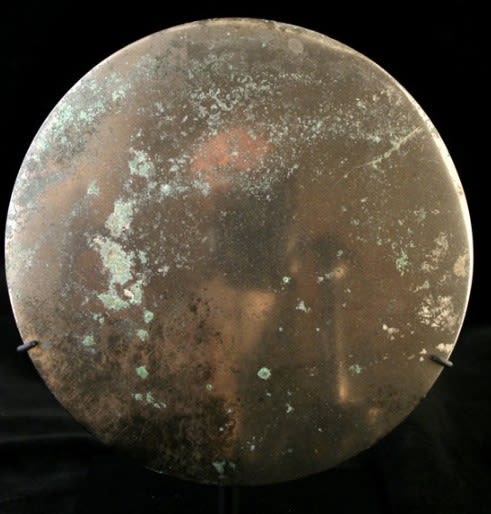Hellenistic Lead Plated Bronze Mirror, 323 BCE - 31 BCE
Lead Plated Bronze
6.25 x 6.25
CK.0054
As visual creatures, humans have an inherent instinct to experience the world around us through our sense of sight. Though we can see all around us, and much of our...
As visual creatures, humans have an inherent instinct to experience the world around us through our sense of sight. Though we can see all around us, and much of our own bodies, we cannot view our own faces without some sort of aid, mainly mirrors. Today, when we hear the word “mirror,” we immediately think of the metal lined glass type, long before the invention of glass, mirrors were created using various polished surfaces. Found in Anatolia, some of the earliest mirrors were made by piecing together shards of obsidian, a naturally occurring volcanic glass. Many thousands of years later, the native cultures of the Pre-Columbian Americas created similar polished stone mirrors. As early as 2000 B.C., polished bronze mirrors were first created in China. This technique spread westward across the Eurasian continent and were well-known in Classical antiquity. Due to the value of the material, a bronze mirror such as this one could have only been afforded by the wealthy elite. A handle may have once been attached, or else it may have been held in place. The reverse has been decorated with a series of concentric circle and today has a rich encrusted patina. The front would have been finely polished, producing a reflection of the viewer’s face. Even today, it is possible to see a rudimentary reflection many centuries later.
